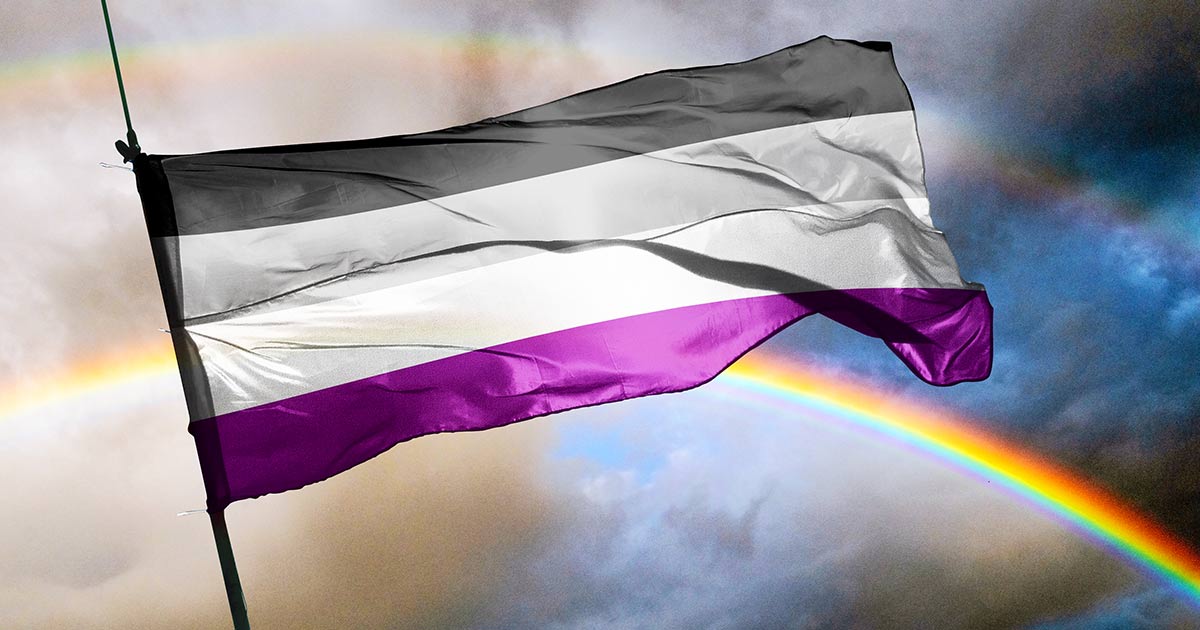Asexuality 101: Dispelling myths and misconceptions

The Asexual Pride Flag represents an often misunderstood section of the LGBTIQA+ community
Asexual Awareness Week is celebrated every last full week of October. It’s a time dedicated to raising awareness about asexuality, dispelling myths, and fostering understanding of the diverse spectrum of human sexuality.
Asexuality is a crucial, yet often misunderstood, aspect of the LGBTIQA+ community. In this article, we will delve into what asexuality is, explore common misconceptions, and shed light on the experiences of asexual individuals.
Defining asexuality
Asexuality is a sexual orientation characterised by a lack of sexual attraction to any gender. Asexual individuals, often referred to as “aces,” can experience romantic attraction, engage in romantic relationships, and have emotional connections with others. However, their experiences do not include a strong desire for sexual activity with anyone.
It’s essential to recognise that asexuality is a valid and natural variation of human sexuality. Asexuality is not a disorder or a choice; it is a fundamental aspect of a person’s identity.
Common myths about asexuality
Asexual individuals have long grappled with misunderstanding and stigmatisation. To promote a better understanding, let’s debunk some common myths surrounding asexuality:
Myth 1: Asexuality is a medical condition
Fact: While an unwanted reduction in sex drive can be linked to medical or lifestyle issues for some people, asexuality is not a medical or psychological condition. It is a sexual orientation, similar to heterosexuality, homosexuality, or bisexuality.
Myth 2: Asexual people cannot experience love
Fact: Asexuality relates to sexual attraction, not romantic attraction. Asexual individuals can and many do experience romantic love, form deep emotional connections, and have fulfilling romantic relationships.
Myth 3: Asexuality is the same as celibacy
Fact: Asexuality is an inherent orientation, while celibacy is a personal choice to abstain from sexual activities. Not all asexual individuals are celibate.
Myth 4: Asexuality is a phase
Fact: Asexuality is a valid and enduring sexual orientation. It is not something people grow out of or change over time.
Myth 5: Asexuality is rare
Fact: Asexuality is more common than one might think. Just like other sexual orientations, asexuality varies in prevalence, with many individuals identifying as asexual worldwide.
The Asexuality spectrum
Asexuality is not a one-size-fits-all label. The asexuality spectrum includes various identities, including, but not limited to:
Aromantic Asexual: Individuals who experience a lack of both sexual attraction and romantic attraction.
Gray-Asexual: People who occasionally experience sexual attraction, but it is infrequent or weaker.
Demi-Sexual: Those who only experience sexual attraction after forming a strong emotional connection with someone.
These variations highlight the diverse experiences within the asexual community and reinforce the importance of recognising asexuality as a legitimate sexual orientation.
Asexuality and relationships
Asexual individuals can and do engage in various types of relationships. Some may choose celibacy, while others form romantic relationships that may or may not include sexual activities. It’s essential to communicate openly and honestly with asexual partners to ensure that everyone’s needs and boundaries are respected.
Supporting the asexual community
Supporting the asexual community means acknowledging their experiences, advocating for their rights, and challenging harmful stereotypes. It’s crucial to educate ourselves and foster an inclusive environment that respects all sexual orientations.
Asexuality is a valid and essential aspect of human sexuality, deserving of recognition, respect, and understanding. By dispelling myths and promoting awareness, we can create a more inclusive society that values the diverse experiences of all its members.
Leave a Reply